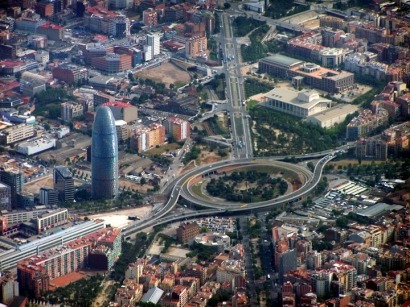
The system involves collecting solar energy accumulated in pavements by circulating a fluid through pipes installed below the surface. This method works similarly to a solar collector incorporated into the pavement. The system can be implemented below any paved surface exposed to solar radiation, such as roads, pavements, car parks, airport landing runways and aprons, etc. Asphalted paved surfaces can heat up 70 degrees in days of strong sunlight, and given the large paved surface area available, there is a great potential for the recovery of this energy, say the developers of the technology.
Multiple applications
The system can be designed for multiple applications, the most novel of these being its use as a solar collector, with great potential in the building sector. Incorporating concepts such as heat storage and heat pumps into the developed system, the accumulated solar energy may be used in low-temperature applications such as the air-conditioning of buildings, sports and leisure centres, swimming pools, and hot water supply.
Another potential application of the system, say its developers is its use “for maintaining the temperature of the asphalt above freezing levels in winter, thus preventing the formation of ice on the roads”. Apart from the benefits to road safety, this would reduce the amount of salt needed to be used to prevent frost, they explain. Moreover, the maintenance required for roads is reduced, as road surface temperature can be maintained stable both in winter and in summer, thus reducing the appearance of cracks and grooves in the paved surfaces. An additional advantage of the system is the reduction of the urban heat island effect, as excess heat is extracted from the paved surfaces.
For additional information:

